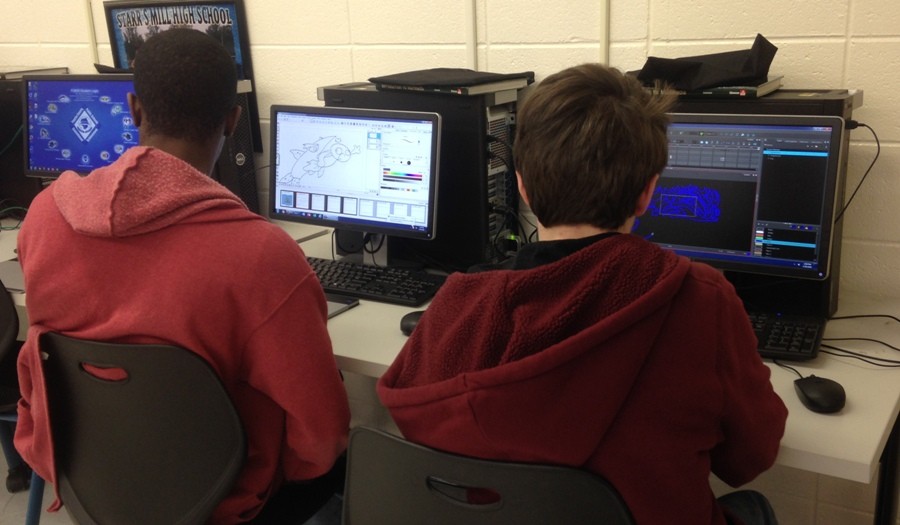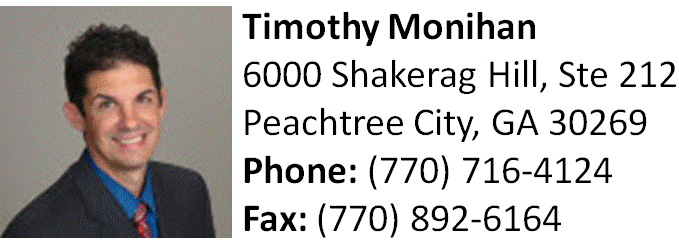CTAE provides technological pathway for modern career opportunities
Junior Micah Stuart uses digital media software, Storyboard Pro, in the new Introduction to Digital Media class to design one of the scenes on his rendition of the children’s book “Jeremy Fisher.” Next to him, senior Dawson Bassan works with the second-year Harmony software after completing his assessment early.
March 18, 2016
A new principal and new teachers were only a few of the changes that came with the 2015-16 school year. Last April, the school began offering Introduction to Digital Media. “Having the opportunity to take this class has allowed me to broaden my knowledge on this career pathway before committing to it in the future,” sophomore Jesse Echols said.
Career, Technical, and Agricultural Education teacher Patt Coleman volunteered to teach digital media because she thought it “sounded interesting.”
In this course, Coleman explains how first-year students learn how to master the art of using media software Storyboard Pro, commonly used by Cartoon Network and Disney Channel.
A storyboard is made up of panels and scenes the student creates that, when completed, becomes a movie. As a large 400-point assessment, Coleman instructed the students to read an old children’s book, “Jeremy Fisher” by Beatrix Potter, and assigned them transform it into completed storyboard format.
“It’s a standard storyboard,” junior Micah Stuart said. They decided where all the different panels would be and when different scene changes would occur to later bring the story to life.
“There isn’t one right answer, but there is a wrong answer,” Coleman said. Students were able to be flexible with the different angles of the story, but they had to keep the basis of the book.
“I thought the project was very educational and helpful because it was an intro on how to operate other specific functions in the software,” Stuart said.
If they choose to pursue this pathway further, students learn to use the Harmony software, which is more animation-based rather than storyboarding.
The class did not come with a textbook, only class standards that have to be covered over the course of the year, so Coleman had to learn the software along with her students. Coleman used online resources to teach the basics. “It was a lot of learning,” Coleman said.
Coleman had to go through four days of extensive training to become certified to teach the class. She “was willing to put in extra training with the new software and equipment in order to be ready for the students in the fall,” assistant principal Charlotte Robinson said.

Sophomore Cole Gilley looks over his almost-completed “Jeremy Fisher” assessment, finishing up the last minute animations and audio files before submitting the project. The “Jeremy Fisher” assessment puts the students’ Storyboard Pro abilities to the test by requiring them to adapt a children’s book into a digital format.
Robinson chose Coleman to teach the class because she is a “veteran career tech teacher and highly qualified for the class.”
After the school decided on a teacher, they had to follow the state guidelines for Intro to Digital Media, which includes having a storage and office room, a high-speed Internet server and up-to-date equipment.
These specifications brought the class to a halt during the first semester of this year because the entire computer lab on the 800 hallway had to be remodeled. During this period, Coleman had no other choice than to cover the basics before students could use the software hands-on.
The school eventually purchased and installed new computer equipment using “special local sales tax specifically for buying equipment,” Robinson said.
Fayette County CTAE director Lisa Collins funded the rest of the resources and teaching supplies needed after introducing the concept to the county. Her goal in creating this pathway is to “align education to economic development,” Collins said.
After collecting the necessary funding, the Mill began the tedious process of starting up the new class. First, the state needed to make sure the school had a qualified teacher and adequate resources.
Once approved, it gets moved to the course list that students use to apply for electives in April. None of the digital media courses requires an application, only an interest in the field.
Students use this list to rank the courses they want to take next year. CTAE classes can have a maximum of 28 students, and this year there are 25 students enrolled in the second period class and 23 in seventh period.
Coleman sees this pathway evolving into the three complete classes to complete the pathway of digital media and animation. She hopes that in the future, students with a passion and interest in this career will continue on this pathway.
“I am real positive that students will use the skills learned in this class to move into a profession,” Coleman said.








